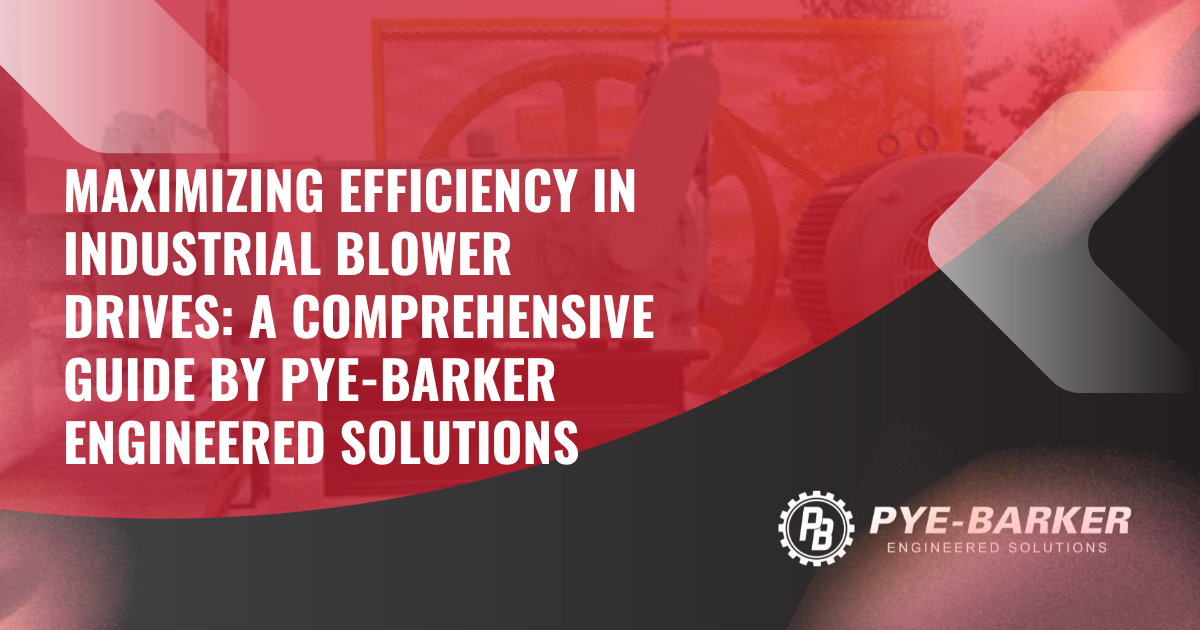
Industrial blowers may seem like simple beasts, merely rotating and moving air, but their efficiency depends significantly on the method of drive employed. As a leading provider of parts and services for industrial machinery, Pye-Barker Engineered Solutions understands the nuances of driving rotary positive displacement blowers to achieve optimal performance.
The Simplicity of Flexible Couplings
When it comes to simplicity and preferred methods, flexible couplings stand out. Brands like Woods Dura-Flex and Sure-Flex offer reliable solutions, ensuring that the blower rotates at the same speed as the motor. However, the challenge arises when the blower's optimal selection demands a different input speed than the motor.
V-Belt Drives for Varied Speeds
In cases where the motor speed doesn't align with the blower's requirements, a v-belt drive becomes essential. Sizing considerations include motor horsepower, speed, service factor, blower required speed and horsepower, as well as shaft diameters. Placing the blower sheave close to the blower is crucial, preventing unacceptable overhung loads that can lead to bearing failures.
Overcoming Bearing Failures
The Achilles heel of rotary positive displacement blowers often lies in the drive shaft bearing. Particularly vulnerable in v-belt drives, this bearing bears the weight of the rotor, rotational forces, and the side load from the v-belts. Incorrect sizing and placement of the belt drive can result in excessive overhung loads, causing premature failures.
Drive Sizing Essentials
All Gardner Denver blower manuals, including Sutorbilt®, DuroFlow®, HeliFlow®, & CycloBlower®, emphasize the importance of drive sizing. Charts and formulas help calculate the overhung load, ensuring it stays within allowable limits. While the math is straightforward, accurate load data from the v-belt drive is crucial for precise calculations.
V-Belt Drives with a 1.4 Service Factor
For rotary positive displacement blowers, v-belt drives should be sized with a 1.4 service factor. This not only ensures the drive's integrity but also prevents belt "rolling" and slippage. Striking the right balance is vital, as a service factor too low risks belt issues, while one too high increases the load on the blower shaft and bearing.
The Jack-Shaft Drive Advantage
For those seeking a middle ground, the jack-shaft drive combines the flexibility of a v-belt drive with the direct drive of a flexible coupling. This method, involving a motor-driven v-belt to a jack shaft, then connected to the blower via a flexible coupling, minimizes overhung loads on the blower shaft while maintaining speed flexibility.
Tailored Solutions by Pye-Barker Engineered Solutions
Pye-Barker Supply Co. possesses the expertise and resources required to accurately size various drives, calculating the resulting overhung load on the blower shaft. With industry contacts to assist in designing jack-shaft drives, we provide comprehensive solutions for industrial machinery.
In the complex realm of industrial blowers, the right drive can make all the difference. Pye-Barker Engineered Solutions, as a trusted name in parts and services, stands ready to optimize blower performance through expert drive selection and sizing.


